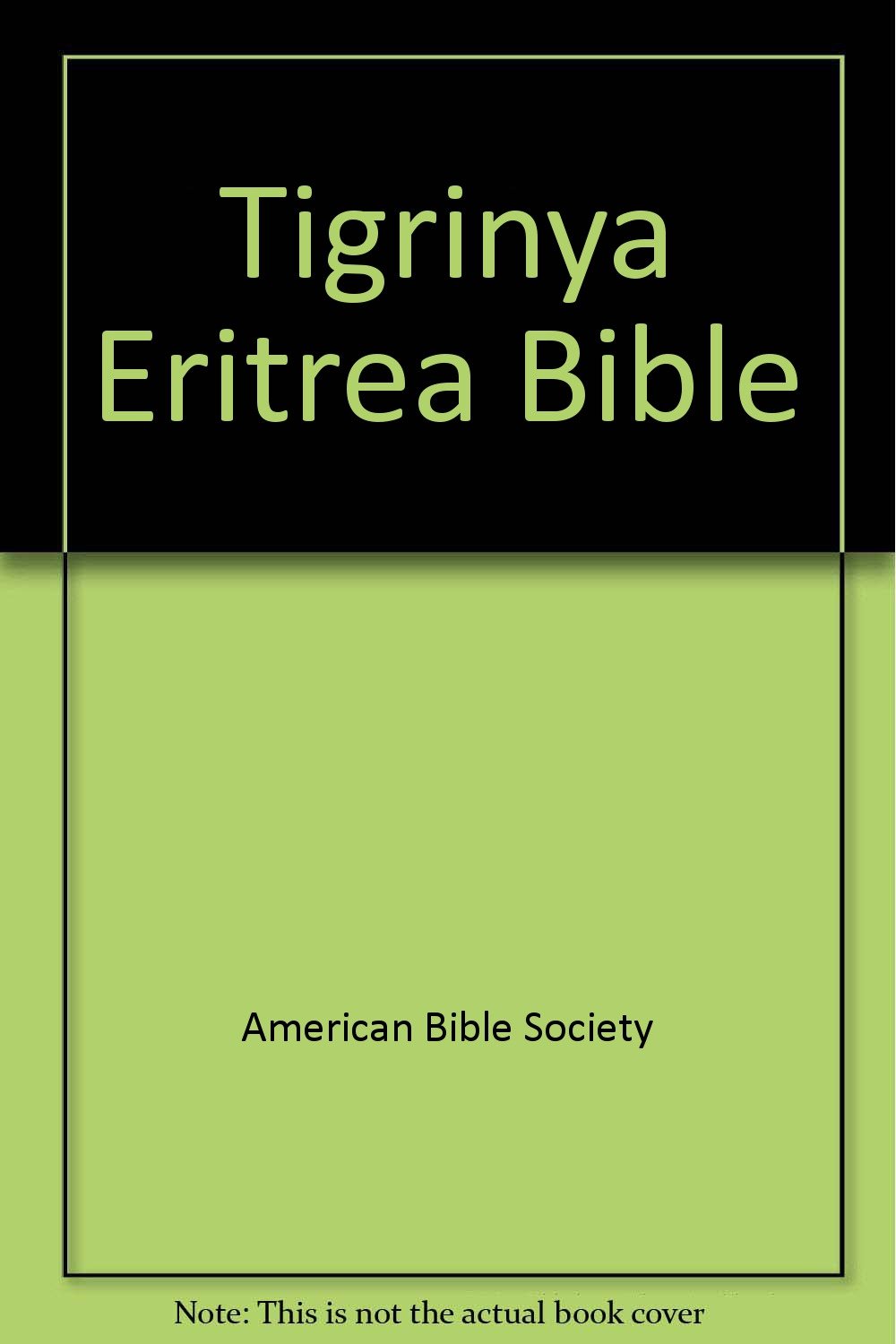About this deal
Tigrinya dialects differ phonetically, lexically, and grammatically. [7] No dialect appears to be accepted as a standard. Eberhard, David M.; Simons, Gary F.; Fennig, Charles D. (2021). "Tigrinya". Ethnologue, 24th ed. SIL International . Retrieved March 4, 2021.
Adjectives behave in most ways like nouns. Most Tigrinya adjectives, like those in Tigre and Ge'ez, have feminine and plural (both genders) forms. For example, ጽቡቕ ṣǝbbuq̱ 'good (m.sg.)', ጽብቕቲ ṣǝbbǝq̱ti 'good (f.sg.)', ጽቡቓት ṣǝbbuq̱at 'good (pl.)' Unlike most Ethiopian Semitic languages, Tigrinya has only one set of applicative suffixes, used both for the dative and benefactive and for locative and adversative senses: ተቐሚጣሉ täq̱ämmiṭa- llu 'she sat down for him' or 'she sat down on it' or 'she sat down to his detriment'. Since these two sounds are completely conditioned by their environments, they can be considered allophones of /k/ and /kʼ/. This is especially clear from verb roots in which one consonant is realized as one or the other allophone depending on what precedes it. For example, for the verb meaning cry, which has the triconsonantal root |bky|, there are forms such as ምብካይ /məbkaj/ ('to cry') and በኸየ /bɐxɐjɐ/ ('he cried'), and for the verb meaning 'steal', which has the triconsonantal root | srkʼ|, there are forms such as ይሰርቁ /jəsɐrkʼu/ ('they steal') and ይሰርቕ /jəsɐrrəxʼ/ ('he steals').Tigrinya has an unusually complex tense–aspect–mood system, with many nuances achieved using combinations of the three basic aspectual forms (perfect, imperfect, gerundive) and various auxiliary verbs including the copula ( እዩ ʼǝyyu, etc.), the verb of existence ( ኣሎ ʼallo, etc.), and the verbs ነበረ näbärä 'exist, live', ኮነ konä 'become', ጸንሔ s'änḥe 'stay'.
There is an accusative marker used on definite direct objects. In Tigrinya this is the prefix nǝ-. For example, ሓጐስ ንኣልማዝ ረኺቡዋ ḥagʷäs nǝ’almaz räḵibuwwa 'Hagos met Almaz'. Catholics Old testaments include the 1st and 2nd Maccabees, Baruch, Tobit, Judith, The Wisdom of Solomon, Sirach (Ecclesiasticus), additions to Esther, and the stories of Susanna and Bel and the Dragon which are included in Daniel.Tigrinya is the most widely spoken language in Eritrea (see Demographics of Eritrea), and the fourth most spoken language in Ethiopia after Amharic, Oromo, and Somali. It is also spoken by large immigrant communities around the world, in countries including Sudan, Saudi Arabia, Israel, Denmark, Germany, Italy, Sweden, the United Kingdom, Canada and the United States. In Australia, Tigrinya is one of the languages broadcast on public radio via the multicultural Special Broadcasting Service. [6] Bibles used by Catholics are different from the Bibles used by Protestants. After the Reformation, Catholic Bibles remained unchanged and Protestants rejected the seven books called deuterocanonicals (Tobit, Judith, 1 and 2 Maccabees, Wisdom, Sirach, Baruch, parts of Esther and parts of Daniel) Verbs are based on consonantal roots, most consisting of three consonants: { sbr} 'break', ሰበረ säbärä 'he broke', ይሰብር yǝsäbbǝr 'he breaks', ምስባር mǝsbar 'to break'. Tigrinya nouns have plural, as well as singular, forms, though the plural is not obligatory when the linguistic or pragmatic context makes the number clear. As in Tigre and Geʼez (as well as Arabic), noun plurals may be formed through internal changes ("broken" plural) as well as through the addition of suffixes. For example, ፈረስ färäs 'horse', ኣፍራሰ ʼafras 'horses'. For second-person pronouns, there is a separate vocative form, used to get a person's attention: ንስኻ nǝssǝḵa 'you (m.sg.)', ኣታ ʼatta 'you! (m.sg.)'.
Hebrews 4:12: "For the word of God is living and active, and sharper than any two-edged sword, piercing even to the dividing of soul and spirit, of both joints and marrow, and is able to discern the thoughts and intentions of the heart." (ቃል ኣምላኽ ህያውን መስለጥን እዩ እሞ) This article contains Ethiopic text. Without proper rendering support, you may see question marks, boxes, or other symbolsinstead of Ethiopic characters. Tigrinya notices at an Eritrean Orthodox Church, Schiebroek, Rotterdam Through the addition of derivational morphology (internal changes to verb stems and/or prefixes), verbs may be made passive, reflexive, causative, frequentative, reciprocal, or reciprocal causative: ፈለጡ fäläṭ-u 'they knew', ተፈልጡ tä-fälṭ-u 'they were known', ኣፈልጡ ʼa-fälṭ-u 'they caused to know (they introduced)', ተፋለጡ tä-faläṭ-u 'they knew each other', ኣፋለጡ ʼa-f-faläṭ-u 'they caused to know each other'.The earliest written example of Tigrinya is a text of local laws found in the district of Logosarda, Debub Region in Southern Eritrea, which dates from the 13th century. [ citation needed] Possessive adjectives take the form of noun suffixes: ገዛ gäza 'house', ገዛይ gäza-y 'my house', ገዛኺ gäza-ḵi 'your (f.sg.) house'.
 Great Deal
Great Deal 